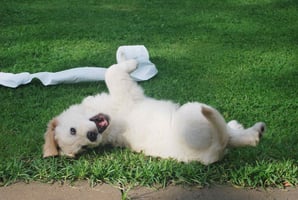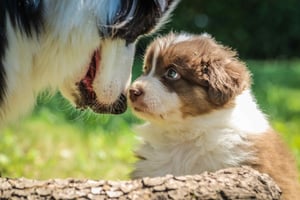Training a dog to answer Google's most popular queries can be a rewarding experience for both you...
How to Train Your Dog Not to Chew Everything
Training your dog not to chew everything can be a challenging task. It requires patience, consistency, and a positive reinforcement approach to ensure that your pup learns the correct behaviour. This article will provide you with a comprehensive guide to training your dog not to chew everything, from the basics of positive reinforcement to specific tips and tricks to help your pup learn the desired behaviour.
Understanding Positive Reinforcement
Positive reinforcement is the cornerstone of successful dog training. The idea is to reward your pup when they exhibit the desired behaviour, while also providing them with constructive guidance. This way, your pup will understand that the behaviour you are asking of them is desirable and will be more likely to repeat it in the future.
When using positive reinforcement, it's important to be consistent with your rewards. If you only reward your pup some of the time, they won't understand which behaviour is desired. Additionally, it's important to use rewards that your pup finds meaningful. This could be a treat, a game, or even just verbal praise.
Establishing Boundaries
Before you can start training your pup not to chew everything, it's important to establish clear boundaries for them. This can be done by ensuring that all potential items that your pup shouldn't chew are out of reach, or by using deterrents such as bitter apple spray or hot sauce to make them less appealing. Additionally, it's important to provide your pup with plenty of appropriate chew toys that they can chew on instead of other items.
Redirecting Chewing Behaviour
Once you have established boundaries and provided your pup with appropriate chew toys, it's time to start redirecting their chewing behaviour. Whenever you catch your pup chewing on something they shouldn't, immediately redirect their attention to an appropriate chew toy. This way, they will learn to associate the desired behaviour with the reward of being able to chew on the toy.
It's also important to be consistent with your redirection. If you allow your pup to chew on inappropriate items some of the time, they won't understand which behaviour is desired. Additionally, it's important to provide your pup with plenty of praise and rewards when they exhibit the desired behaviour.
Using a Crate
Using a crate can be a great way to train your pup not to chew everything. By providing your pup with a safe, comfortable space to retreat to, you can limit their access to inappropriate items and ensure that they have plenty of appropriate chew toys to focus on instead.
When using a crate, it's important to ensure that your pup is comfortable and secure. Make sure that the crate has plenty of comfortable bedding, and provide them with plenty of treats and chew toys to focus on. Additionally, it's important to never use the crate as a punishment, as this can be counterproductive.
Ignoring Unwanted Behaviour
Ignoring unwanted behaviour is another effective way to train your pup not to chew everything. Whenever your pup is exhibiting undesired behaviour, simply turn away from them and ignore them. This will let them know that the behaviour is not acceptable, and that they will not be rewarded for it.
It's important to be consistent with this technique, as your pup may not understand which behaviour is desired if you only ignore them some of the time. Additionally, it's important to provide your pup with plenty of praise and rewards when they exhibit the desired behaviour.
Conclusion
Training your pup not to chew everything can be a challenging task, but with patience, consistency, and a positive reinforcement approach, you can ensure that your pup learns the desired behaviour. By understanding the basics of positive reinforcement, establishing boundaries, redirecting chewing behaviour, using a crate, and ignoring unwanted behaviour, you can help your pup learn the correct behaviour.



